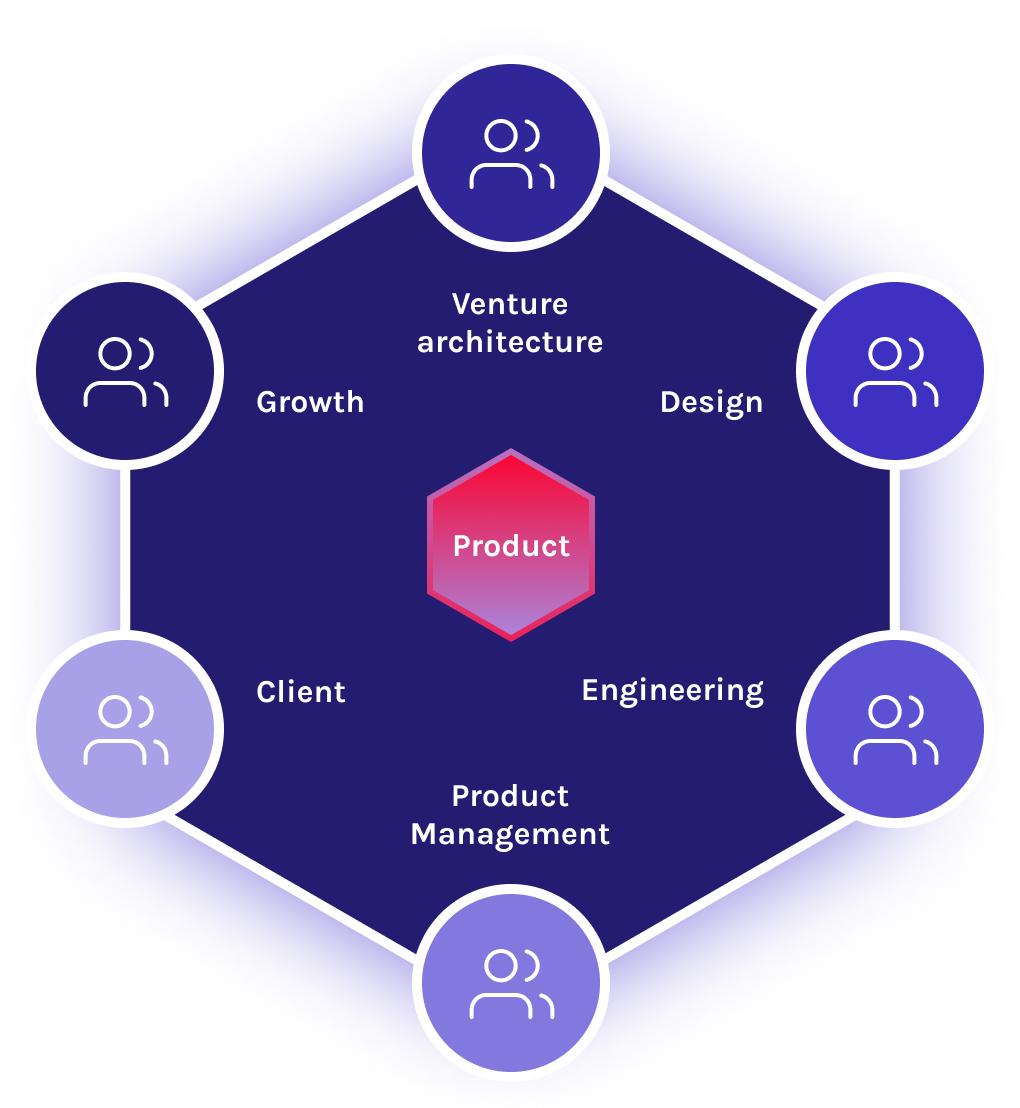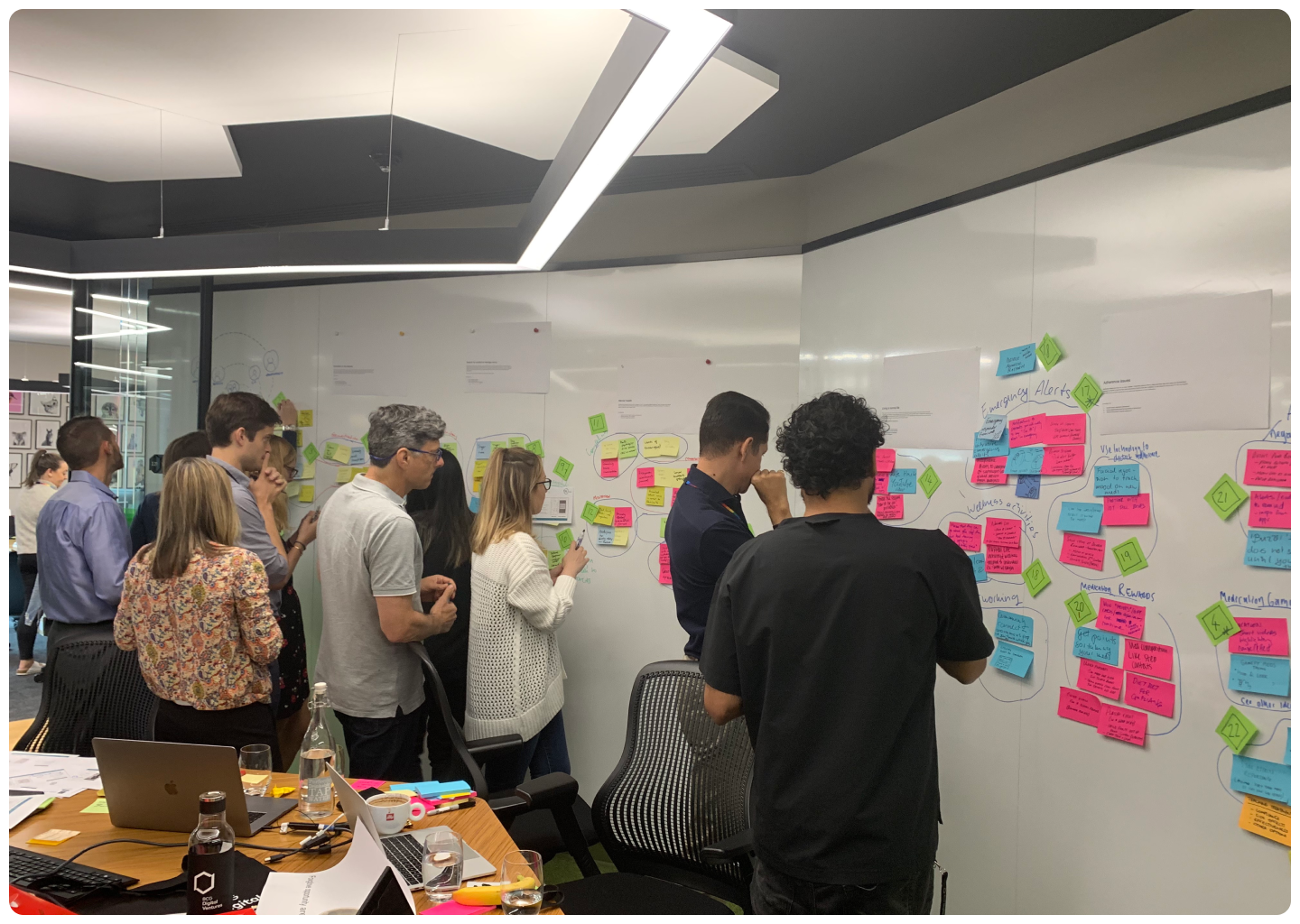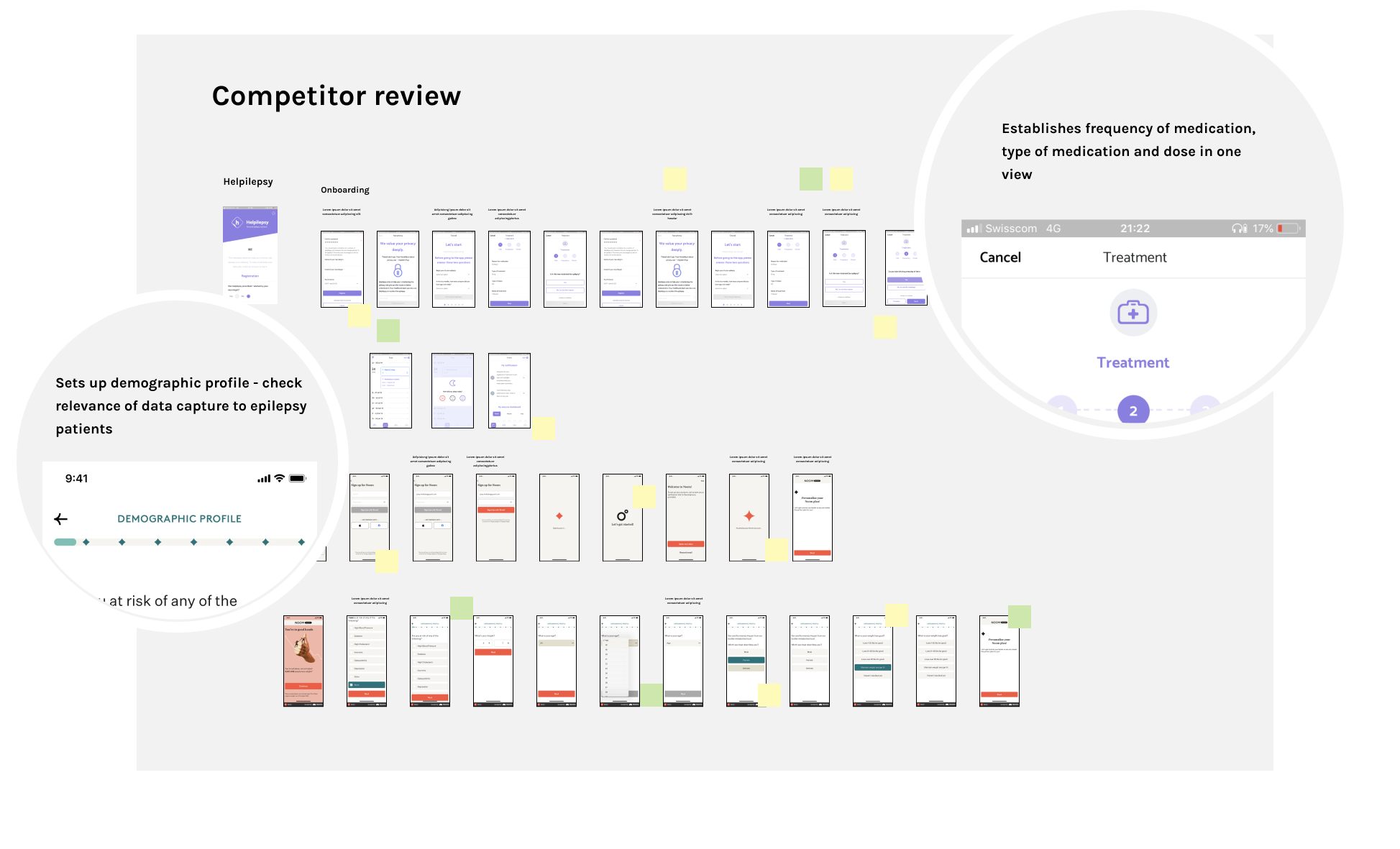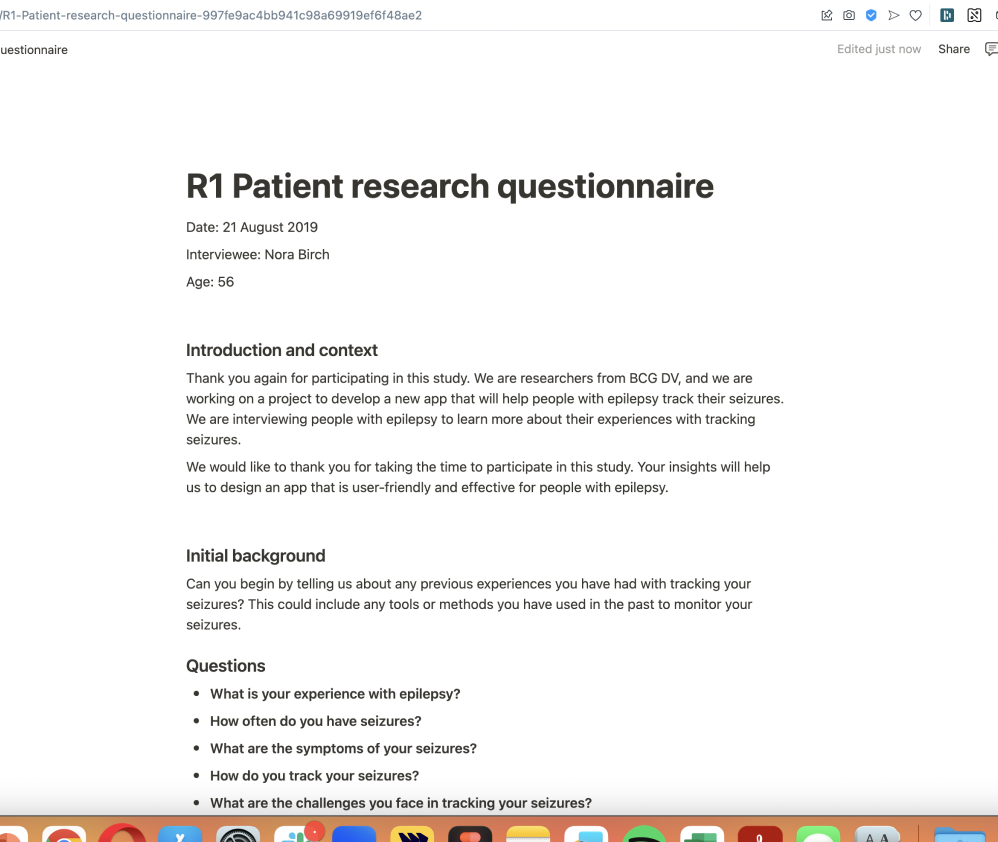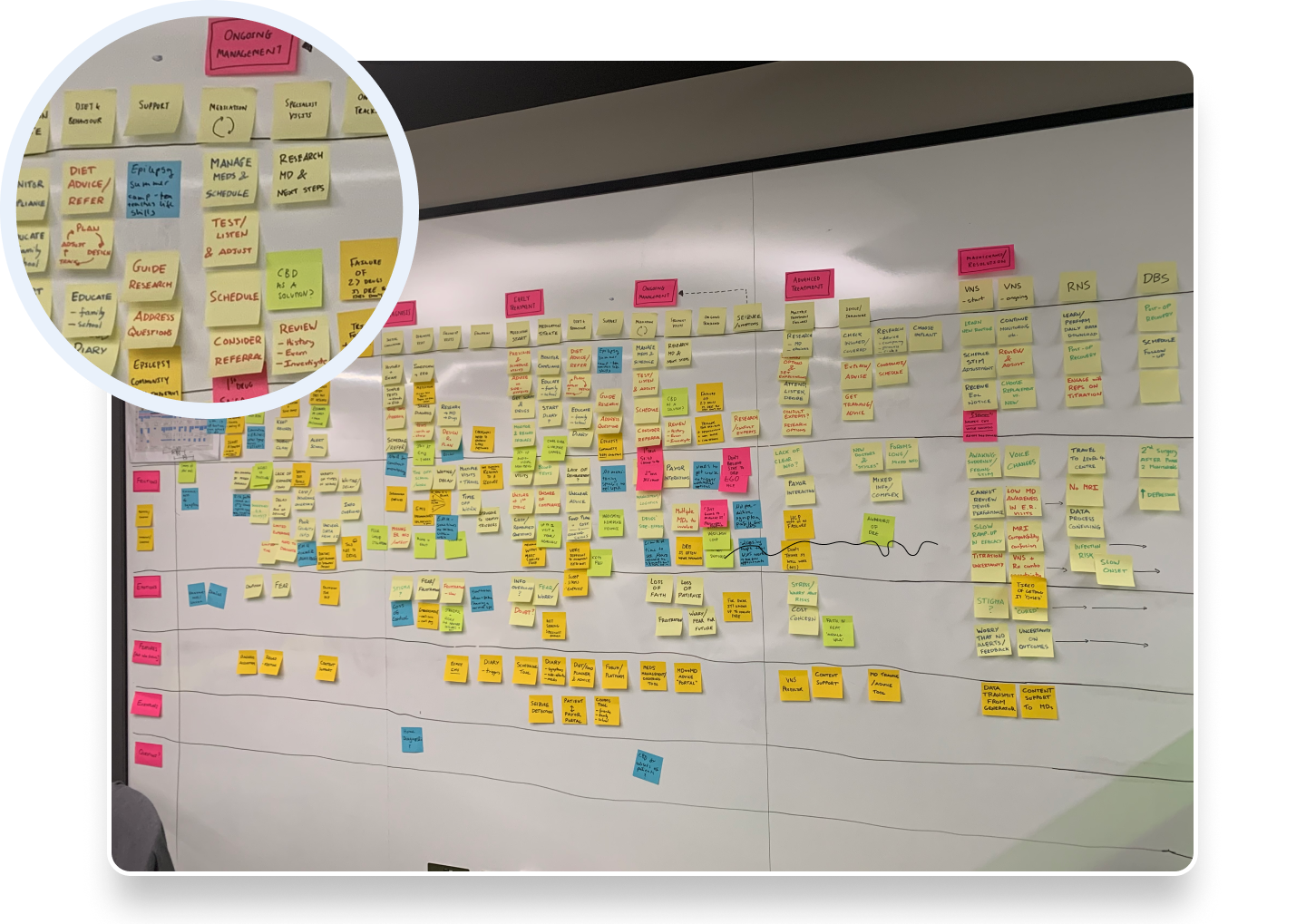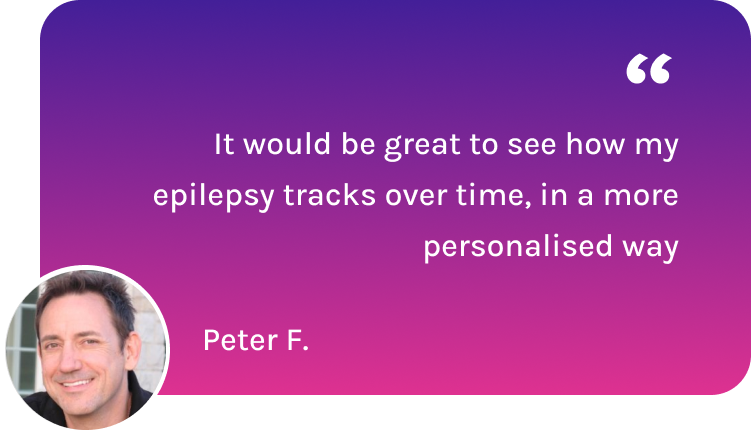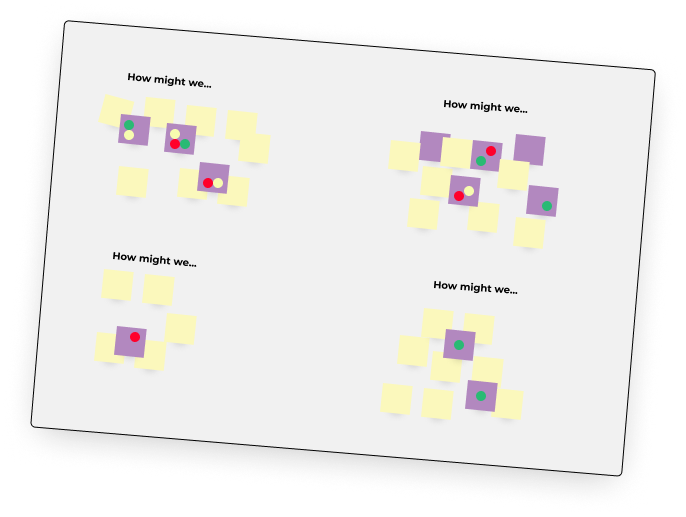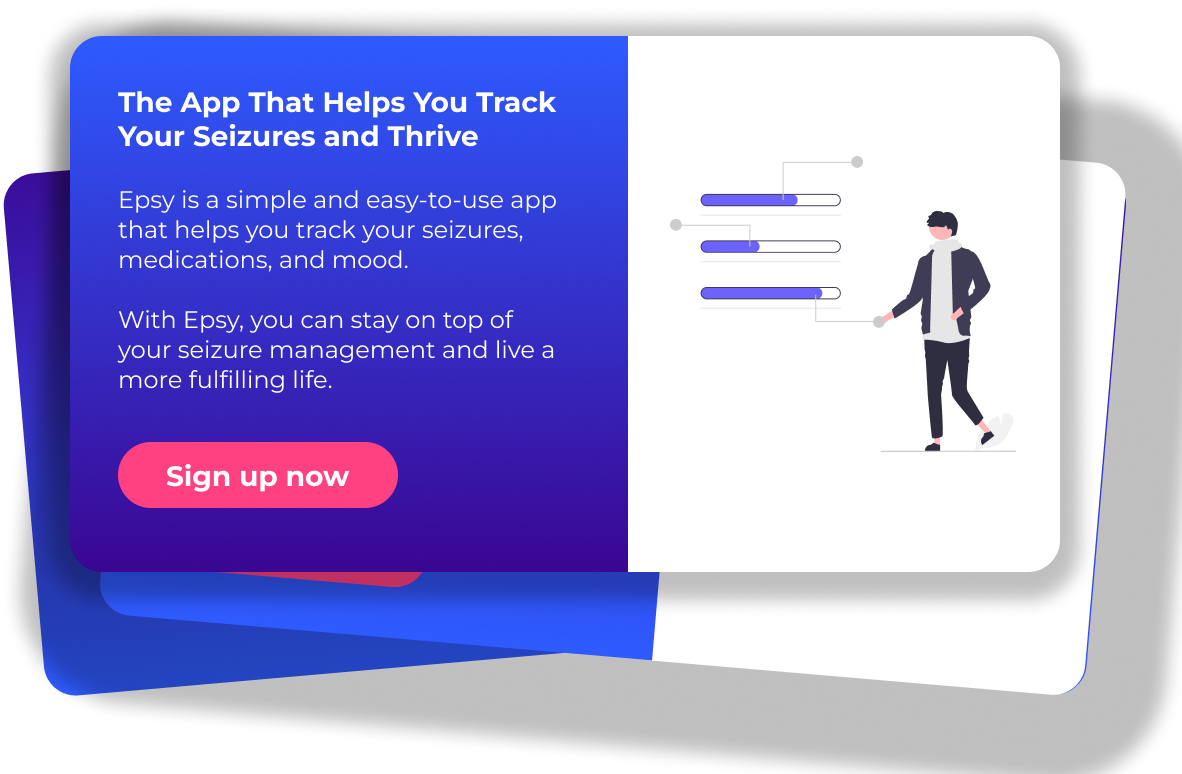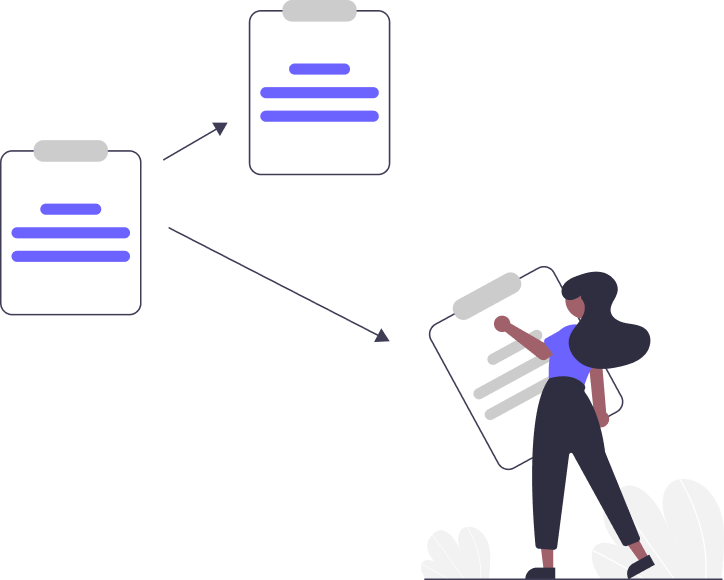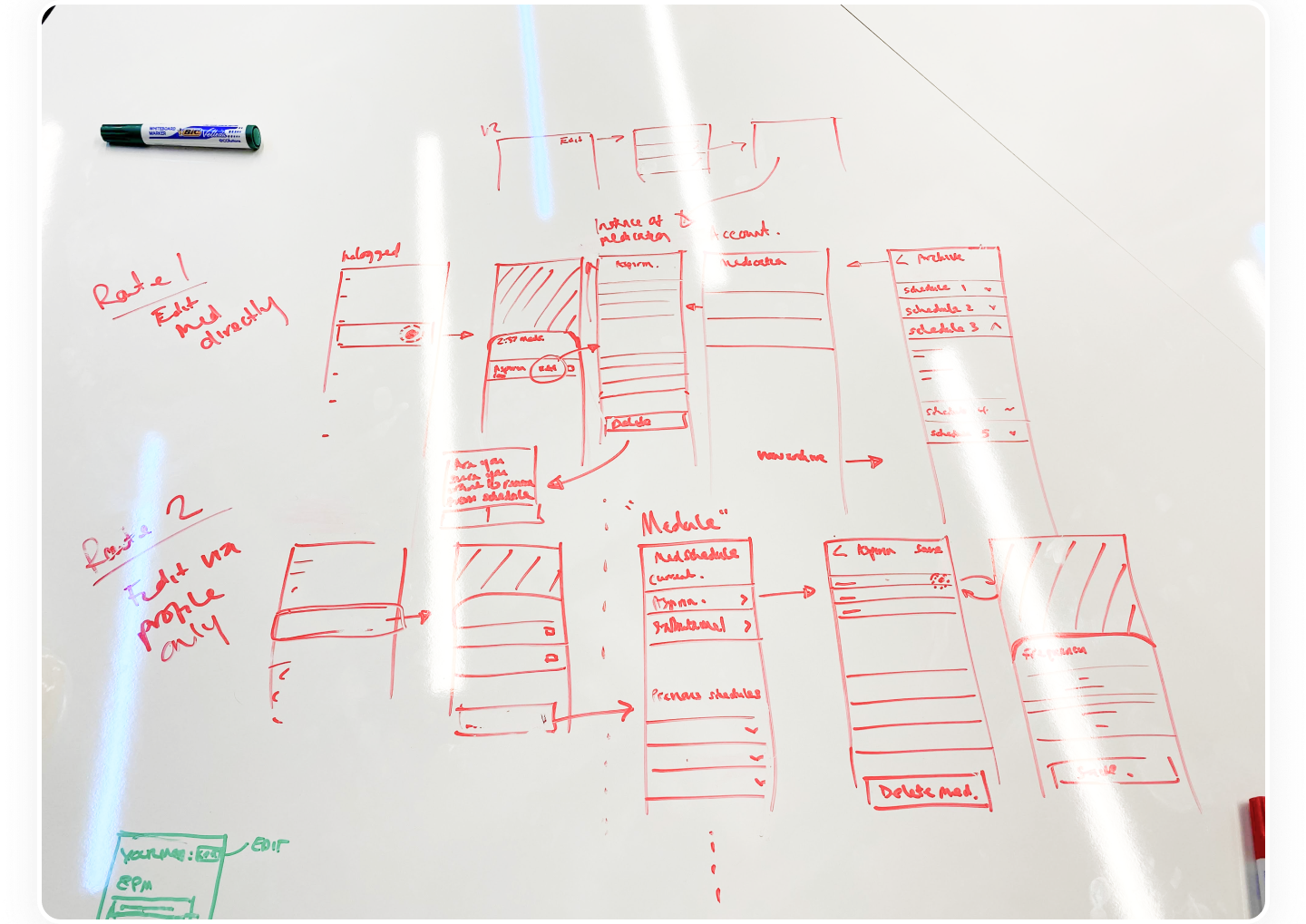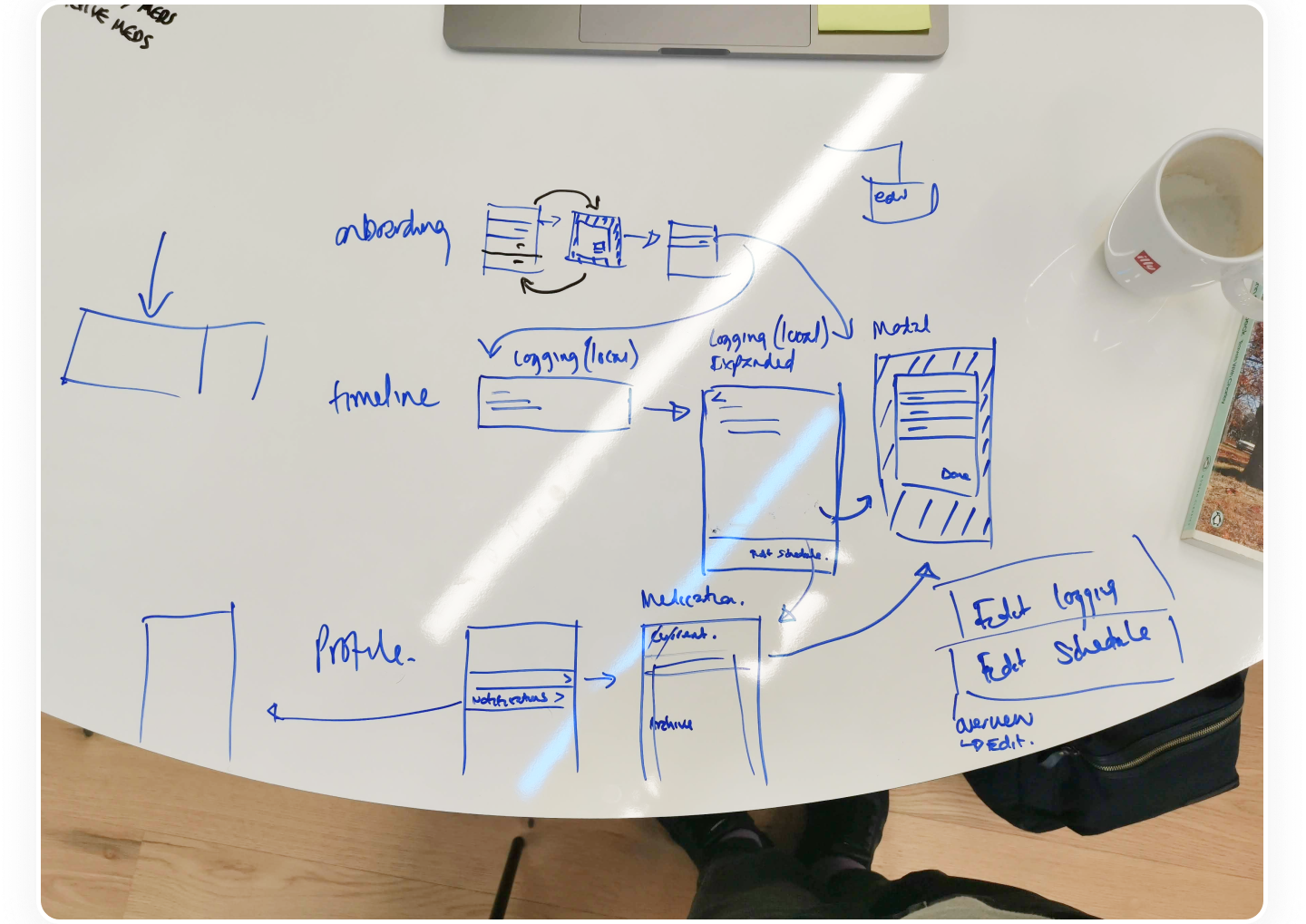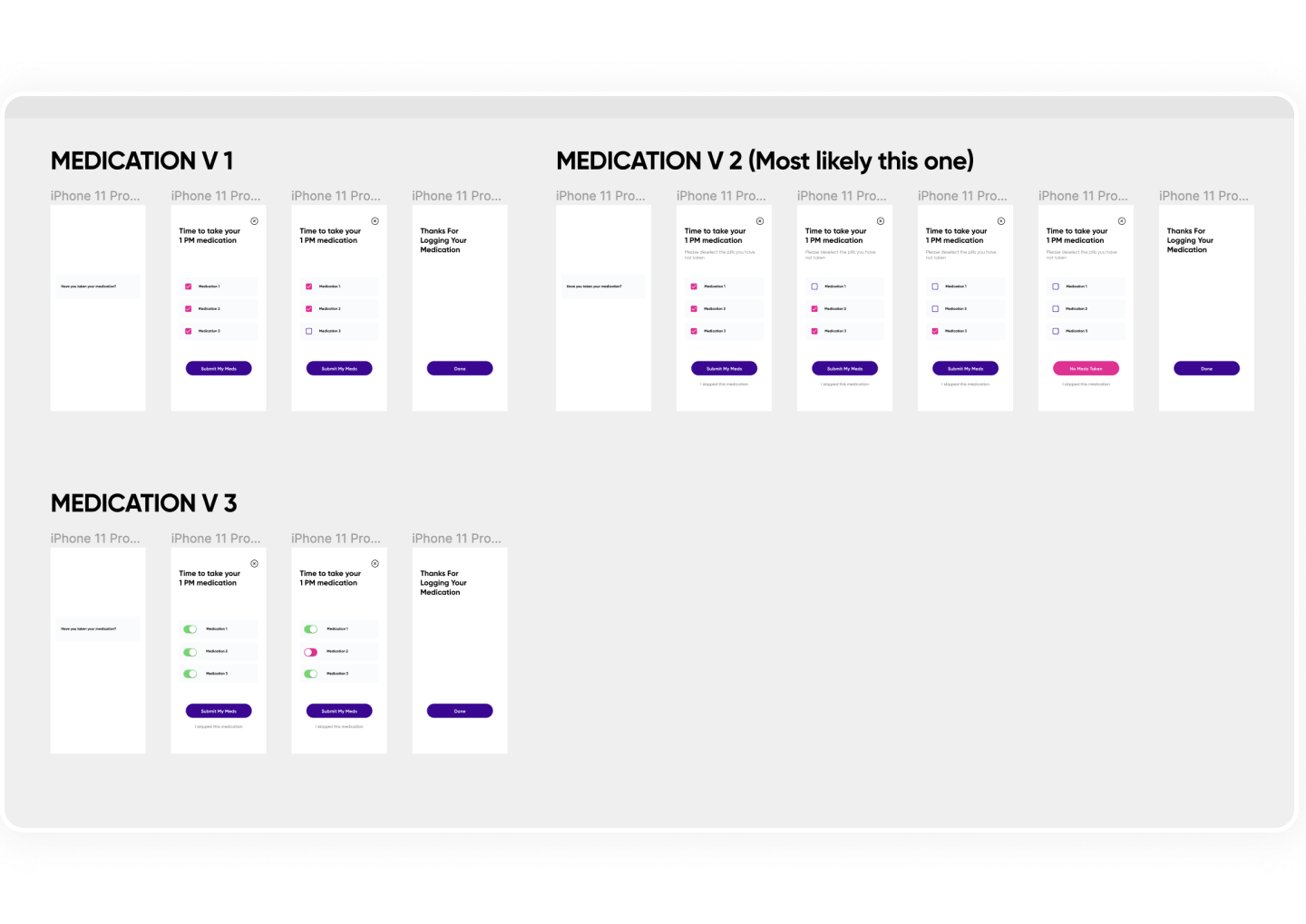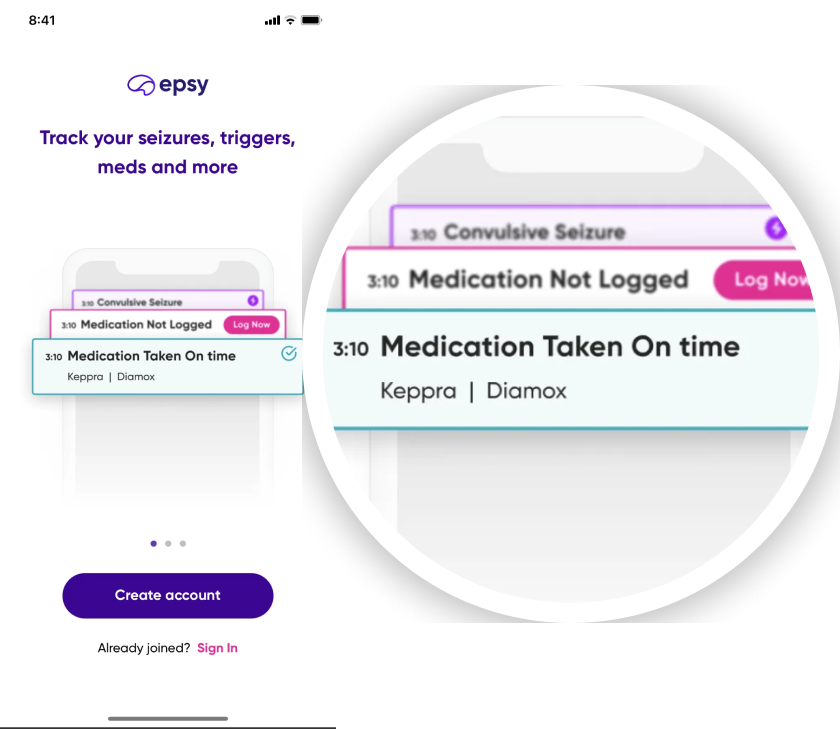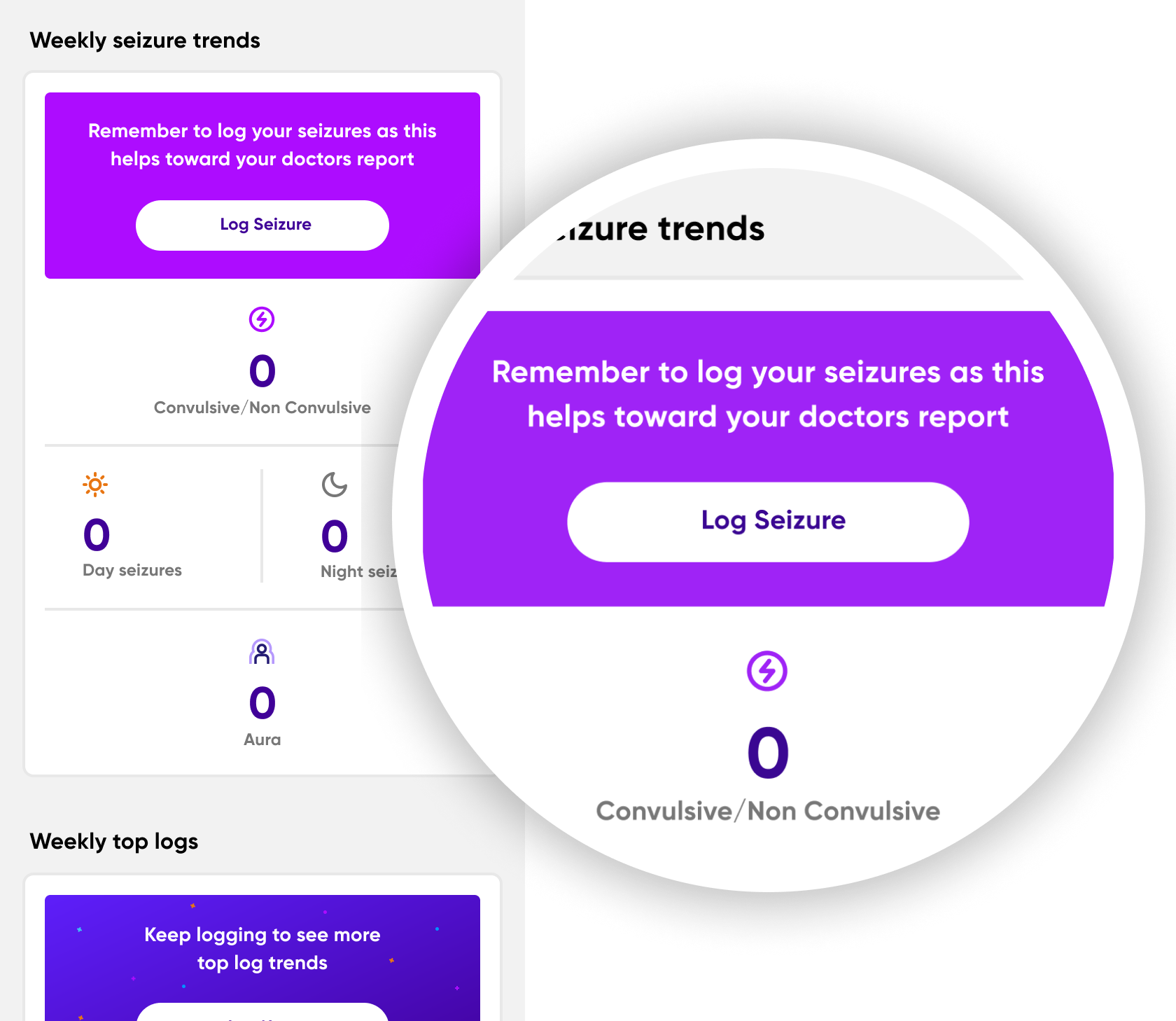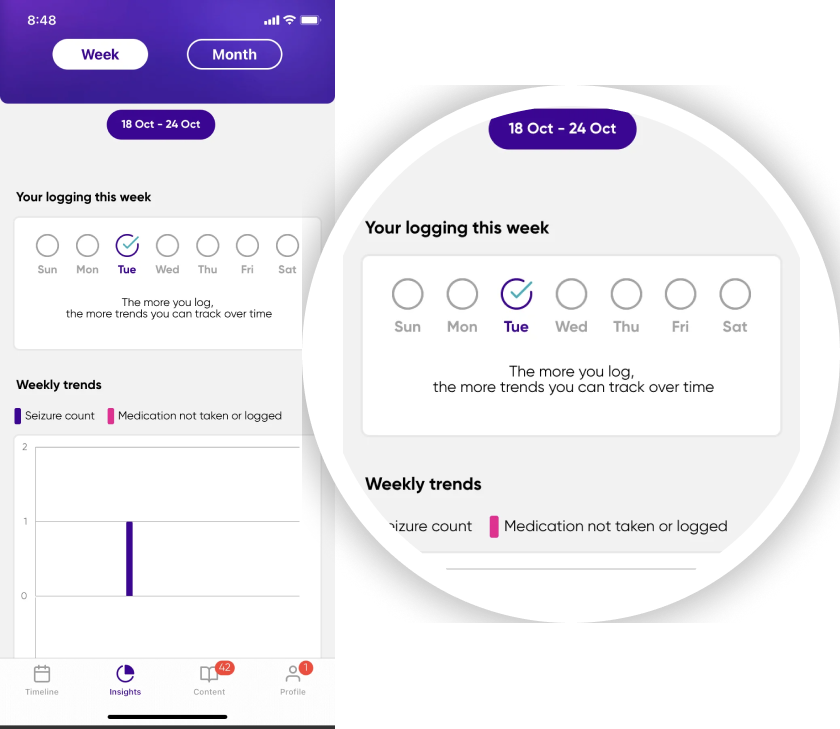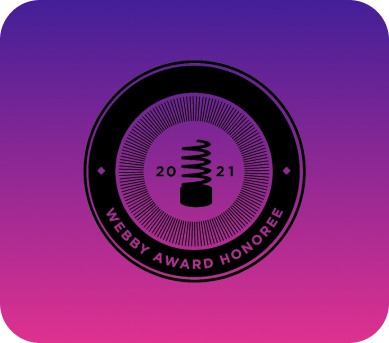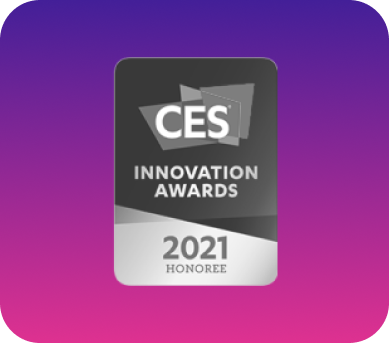
Empowering Epileptics
On behalf of a leading MedTech company focused on neuromodulation and cardiovascular solutions, we created an app to increase awareness of Drug Resistant Epilepsy (DRE) and improve funnel conversion for the client’s Vagus Nerve Stimulation (VNS) treatment.
SUMMARY
An award-winning digital epilepsy management platform that accelerates improved outcomes for patients, caregivers, and healthcare professionals by supporting discussions and providing insights
150+ users in unpaid beta testing with >30% 4-week retention rate of weekly active users post-download
100% of HCPs consulted and engaged would recommend Epsy to their patients
>10,000 active users since launch (according to figures obtained prior to handing over project)
OUTCOME
TYPE
Concept validation sprint and full incubation (MVP build)
TIMELINE
ROLE & SKILL SET
Senior Experience Designer
Competitor review
Stakeholder interviews
Workshop facilitation
Information architecture
Wireframing
Prototyping
User testing
TEAM
Design Lead
Strategic Designer
Senior Experience Designer
UI Designer
Product Manager
Venture architect
+wider venture team
Objective
Create a user-centric app that enables individuals with epilepsy to gain valuable insights to improve their overall well-being and outcomes, and to accelerate their treatment towards VNS (Vagus Nerve Stimulation)
It begins with a kick-off
The initial kick-off meeting is a critical opportunity for team members to get to know each other and build trust. It’s also a time to discuss the project goals and objectives, as well as the team's roles and responsibilities.
For me, this is an essential part of understanding the business opportunity, constraints, context and ambition. We also want to set a concrete problem statement - as this will drive all work from this point.
As with all Digital Ventures setups, the team was located together in one room, comprising multiple skill sets: venture architecture, product management, design, and engineering. In addition, we had the benefit of client embeds for the duration of the project.
Understanding the world of an Epileptic
To understand our target users' needs and pain points, I assisted in user research with our strategic designer. We conducted in-person interviews with people with epilepsy, caregivers, and healthcare professionals, and analysed similar apps and competitors, revealing a lack of existing products in this space.
Mapping the patient journey
With our body of insights from user research, we mapped a high-level journey that illustrates the patient’s experience with epilepsy from first diagnosis to treatment.
This exercise helped us capture the nuances and sub-processes involved at different stages of the treatment journey, and some of the opportunities we might want to consider for our product.
The patient journey also helped the product team to prioritise features and to develop a roadmap for the future of the app.
Synthesising learnings
To help guide our thinking for the initial product strategy , we analysed and prioritised key themes from the research.
Help me with adherence
Users desired a simple and intuitive app that would allow them to easily log seizures, medications, and triggers.
Help me understand my condition
Personalised insights and recommendations based on individual data were highly valued by users.
Help me share
The app needed to facilitate seamless sharing of seizure information with healthcare professionals and loved ones.
Help me connect
Users expressed a need for a supportive community aspect to connect with others facing similar challenges.
Ideating the core feature set
Armed with prioritised research insights, we began generating feature ideas for our initial MVP hypothesis and refined the value proposition.
To do this, I first organised a collaborative rapid ideation session in Miro with the wider team. Using the KJ method, I structured the session around 3-4 "How might we?" questions derived from interrogating user needs.
I then prioritised our idea output by affinity mapping. I wanted to ensure the team bought into the eventual solution, so I invited them to vote on their favourite ideas.
Targeting and value proposition
I assisted the team in making value proposition cards that highlighted the product's unique features, benefits, and intended users. We tested these with actual users and refined the messaging based on their feedback. We also used these value propositions in social media ads linked to a product landing page to gauge their appeal and measure demand.
4 key high-value features identified
The highest value features of those we tested formed our chosen value proposition. These were the features most commonly placed in the ‘Must-have’ category by our interviewees.
Medication logging
Track your medications, side effects, and mood all in one place
HCP report
Provides a comprehensive overview of seizure activity, mood, sleep patterns, and medication usage. This information can help healthcare professionals to make informed decisions about your treatment plan
Trigger idenitification
Understand how your Epilepsy is triggered, when it is triggered and if there are broader patterns
Educational content
Understand epilepsy to help you manage it more effectively
Giving shape to the product
Understanding the key benefits, main features, and how they meet user needs, I started to create an initial plan with wireframes to shape the product. We could then use these for testing to complete the validation phase.
Designing for behaviour change
In creating Epsy, we adhered to a range of established UX principles to ensure a seamless and user-centred experience. Our design process focused on the following key aspects:
Commitment
Goal setting can help users to stay motivated and on track. This can help users to see how they’re doing and to stay motivated to achieve their goals.
Encouragement
Showing clear progress in their timeline, and the consequences of their commitment in the form of insights, helps encourage further use
Nudges
The ‘Hooked’ model helped us create a series of nudges that would spur action and be met with reward for completing tasks.
Delight
When users have a positive and delightful experience with your product or service, they are more likely to have a positive impression of your brand. This can lead to increased brand awareness, brand trust, and brand loyalty.
Streaks
By giving users more easily achievable goals, they’re more likely to stick with them.
Ease of use
Seizure logging should be easy and fun. We made a prominent quick-action button that guides patients through a few simple steps.
From vision to build
The first phase of the project - the 'validation' phase - is now complete. This phase was essential to confirm that the product meets the needs of our target users and is ready for development.
In this phase we:
Conducted extensive research and testing to gather insights into the user's pain points and needs.
Mapped the overall patient experience, including a deep dive into the requirements of healthcare practitioners
Built several basic prototypes to test different user flows and interactions.
Iterated on the design and value proposition based on user feedback
Received the go-ahead from the client to incubate the product and build it for real
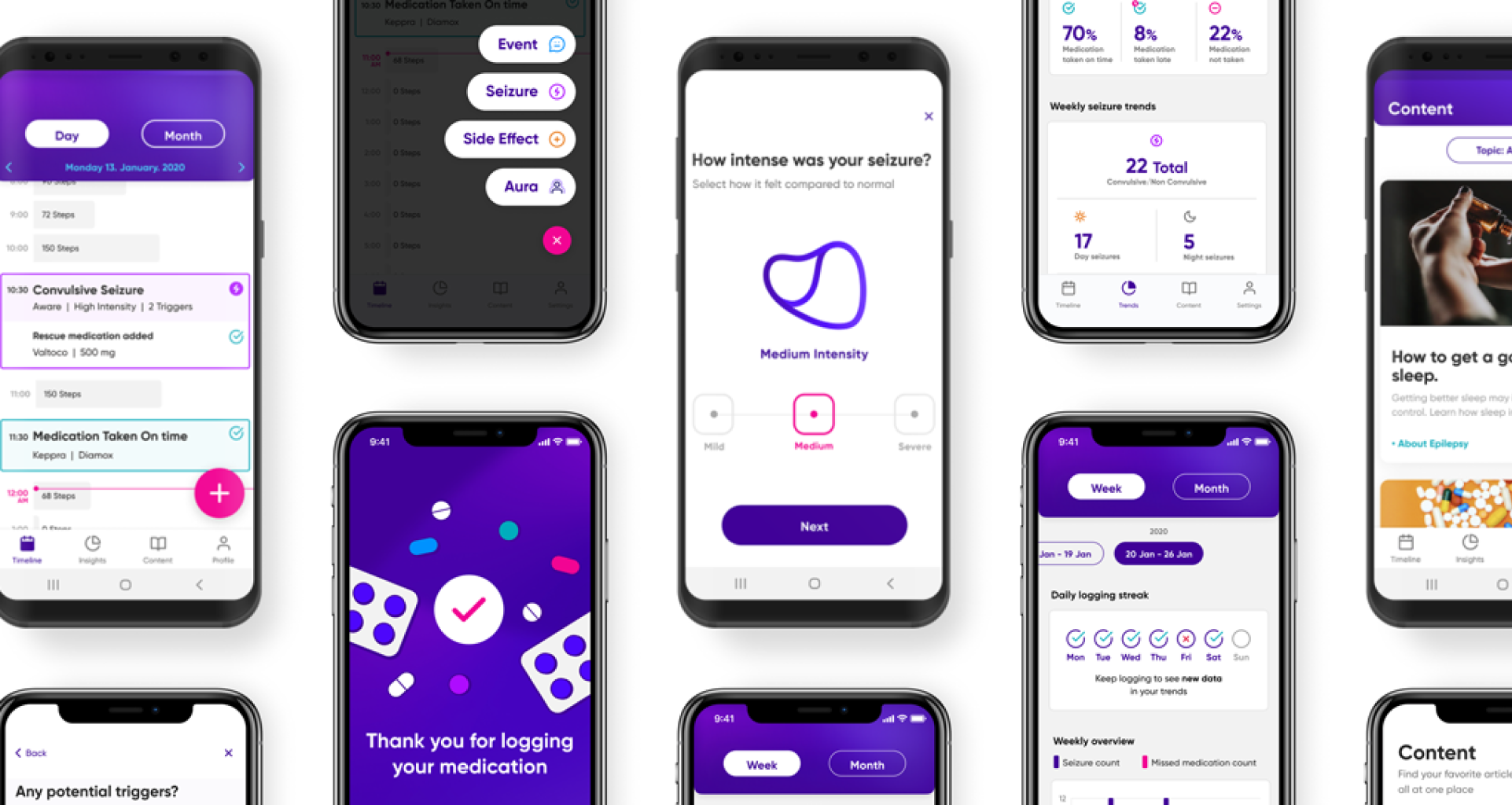
Impact
Designing the Epsy app from scratch yielded significant positive results and had a strong impact on the epilepsy community.
Key outcomes and achievements included:
High user satisfaction and positive feedback from individuals using the app, appreciating the intuitive interface, ease of use, and valuable features.
Rapid growth in user adoption and engagement metrics, such as increased daily active users and extended session durations.
Expansion of the Epsy user base, with the app gaining traction through positive word-of-mouth recommendations and improved app store ratings.
Strengthened relationships with healthcare professionals and caregivers, who found the app valuable in facilitating communication and providing comprehensive support.
In conclusion, designing the Epsy app from scratch allowed us to create a user-centric solution that addressed the specific needs of individuals with epilepsy. Through research, iterative design, and user testing, we successfully developed an intuitive, supportive, and engaging app for Epileptics that continues to grow.
The most awarded epilepsy management app
Google Material Design
Material Motion 2020
The Webby Awards
Honoree 2021
CES Innovation Awards
Honoree 2021
Innovation by Design
Honoree 2021






